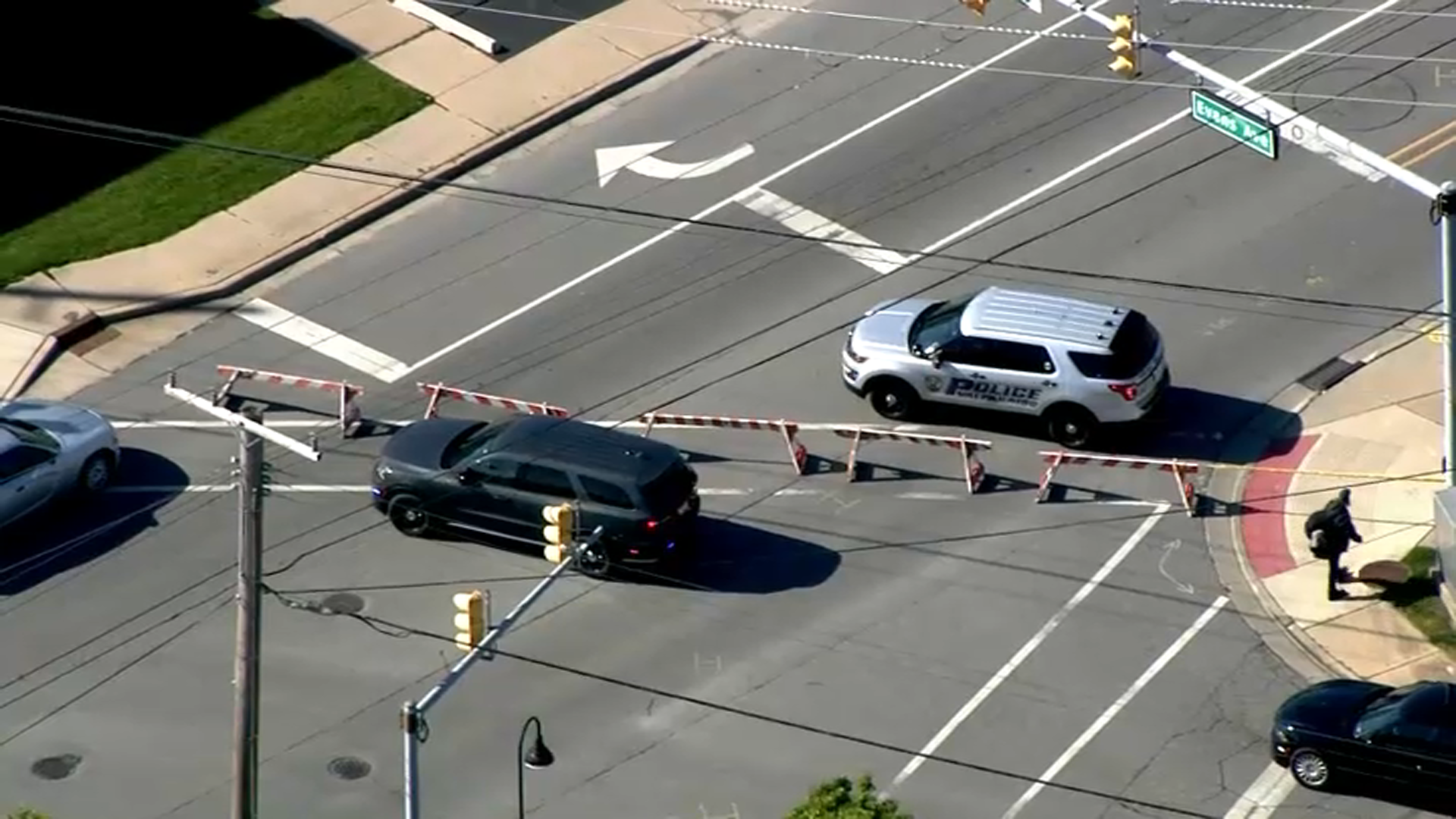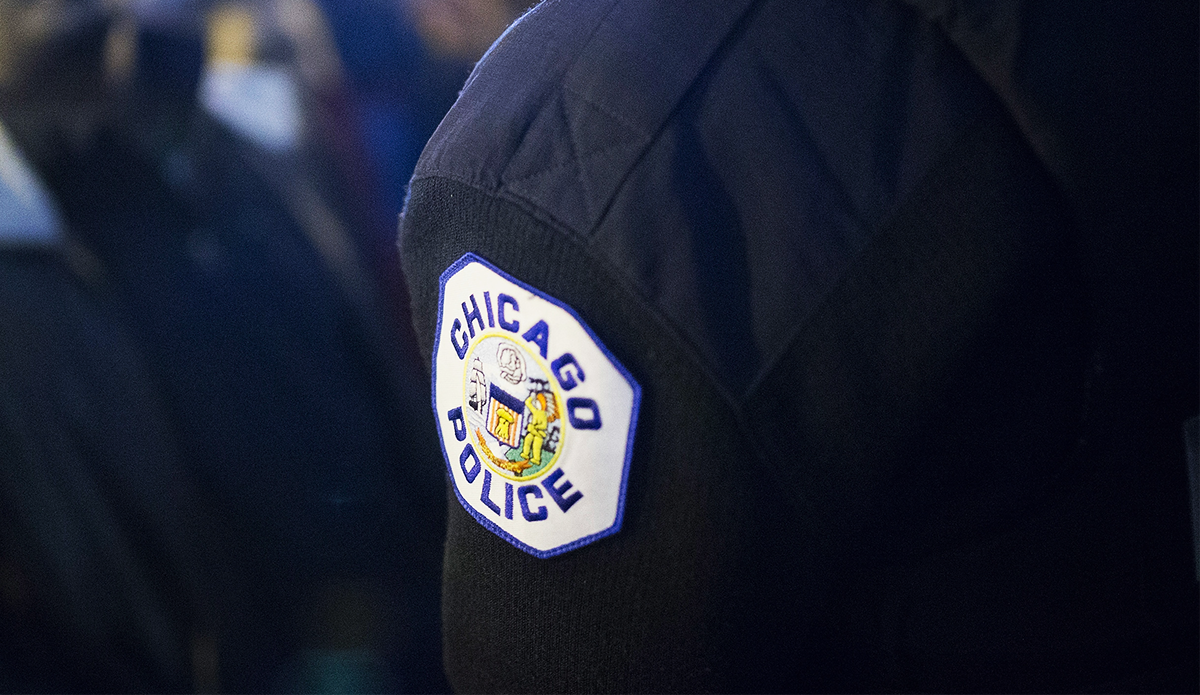Chicago’s Mayor Lori Lightfoot has been crystal clear about trying to keep coronavirus rates down in the city.
In fact, Chicago is currently imposing travel restrictions on anyone who comes in to the city from 22 other states – plus Puerto Rico. The mayor’s standard is that a state can’t have more than 15 cases per 100,000 people, over the past seven days – a data-point that can signal a “hot spot."
But NBC 5 Investigates has found thirteen neighborhoods within Chicago that have recently logged so many new cases of coronavirus, that they themselves are currently above the 15 new case limit that their own city has set.
And we’ve found a total of 73 towns in the greater Chicago area, which also are above the recent, daily new case limit of 15, that would trigger the city’s travel restrictions for their citizens.
Added to all that: another 172 communities throughout the rest of Illinois also have current daily case counts of more than 15 when judged by population.
Local
And remember that Chicago’s standards are not as tough as some other states, which are also imposing restrictions. The state of New York, for example, imposes travel restrictions on any state that has 10 or more recent daily cases, per 100,000. That currently includes Illinois which – as of Friday – is averaging 13.4 new cases a day, per 100,000 people, over the most recent seven day period.
The good news is: we found more than 600 communities and Chicago neighborhoods that are under the 15 level where the city of Chicago becomes concerned. That means that about 70% of the communities we looked at are currently seeing new cases at a lower rate.
For this analysis, NBC5 Investigates used the daily case numbers reported by the Illinois Department of Public Health, from July 30th through August 5th. We took the average daily new cases for each zip code, for those seven days, and divided them by the zip code's population, divided by 100,000. This results in an average daily new-case number for the last seven days, per 100,000 people, for each community.
And these numbers can change constantly, since they’re based on the most recent week of case numbers.
NBC 5 Investigates also found that 31 counties, as well as four regions, in Illinois and the greater Chicago area are currently seeing so many daily coronavirus cases, that they meet the quarantine criteria issued by the city of Chicago.
One county of note is Sangamon County, which we found has a current average daily rate of 16.0 cases per 100,000 people, over the past week.
Sangamon County is home to the state capital of Springfield – where NBC 5 Investigates logged cases in the five zip codes that cover the capital city – and where Gov. J.B. Pritzker and so many others spend much of their time when they’re not shuttling back and forth to Chicago.
We found that – overall – the city of Springfield currently has a daily new case rate, per 100,000 people, of 24.2 – far, far above the limit that the city of Chicago has set, for travelers coming in to the city.
(That’s based on 159 total new cases over the most recent 7 days – compared to a total population in those 5 zip codes, of 93,487. Using the city’s formula, you get: (159 total new cases in the past seven days of all five zip codes / 7 days) / (93,487 total population of all five zip codes / 100,000) = 24.296 daily cases per 100K people.
Additional details:
Oddly, the state does not report any coronavirus cases or tests for the zip code 62701 – the zip code that covers both the Illinois State Capitol building and the governor’s executive mansion. The area that covers 62701 is tiny – basically just the state buildings around the capitol building – a six-block-by-six-block area.
Those buildings are surrounded, however, by three zip codes: 62702, 62703, and 62704, which cover the surrounding downtown areas around the capitol.
And there’s some cause for alarm there, in term of those areas’ recent daily new-case rates, per 100,000:
62702 – just to the north of the capitol and the governor’s mansion, currently has a rate of 14.7 daily cases
62703 – just southeast of the capitol and the governor’s mansion, currently has a rate of 13.4 daily cases
And 62704 – just southwest of the capitol and the governor’s mansion, currently has an astounding rate of 562.9 daily cases, when judged against a 100K population. (The zip includes both Springfield and the adjacent town of Leland Grove). (The zip code has reported 58 new cases, in the past 7 days, in a population of just 1,472 people.)
In fact, NBC 5 Investigates found it is the zip code with the highest rate in the entire state – right next to the capitol building and governor’s mansion.
What’s more: the western part of Springfield is covered by zip code 62711. It’s also above the Chicago travel limit, with 20.5 daily new cases per 100,000 population.
And the eastern part of Springfield – covered by zip code 62712 – is also above the Chicago travel limit, with 18.0 daily new cases.
All of those zip codes, added up, complete the average of the overall Springfield city rate of 24.2 cases.
Here are the thirteen neighborhoods within Chicago’s city limits that currently have daily-new-case levels (over the past 7 days) above the city’s restrictions:
Chicago Loop (south-central area) – 36.5 average daily cases per 100,000 population
Marquette Park – 23.4
South Chicago – 21.8
Hegewisch (the eastern portion of the neighborhood) – 21.1
Cragin – 21.1
Brighton Park – 20.0
Englewood (the western portion of the neighborhood) – 19.1
Clearing – 17.5
Old Irving Park – 16.1
Schorsch Village – 15.6
Morgan Park – 15.5
West Morgan Park – 15.4
Back of the Yards – 15.2
Here are the Chicago-area communities where NBC5 Investigates discovered current average daily new-case rates above 15.0 per 100,000 people – listed in order of which county has the most:
Cook County:
Flossmoor – an average of 30.7 new cases, per day, for the last 7 days, per 100K people; Bridgeview – 28.6; Arlington Heights (the town’s north region) - 25.6; Hazel Crest – 25.6; Summit – 25.1; Blue Island – 22.6; Posen – 22.2; Palos Hills – 21.3; Lincolnwood – 20.5; Calumet City – 20.1; Harwood Heights – 19.6; Dolton – 18.3; Cicero – 18.0; Matteson – 17.9; Hanover Park – 17.9; Country Club Hills – 17.5; Olympia Fields – 17.4; Evergreen Park – 17.4; Richton Park – 17.3; Schiller Park – 17.1; La Grange Park – 16.9; Justice – 16.8; Bellwood – 16.5; Orland Park [the town’s south region] – 16.1; Berwyn – 16.0; La Grange – 15.4; South Holland – 15.4; Burbank – 15.3
(Note that eight of these suburbs – Bridgeview, Summit, Blue Island, Lincolnwood, Harwood Heights, Cicero, Evergreen Park, and Burbank – directly border the city of Chicago – meaning that with one step, someone can travel from a place that technically qualifies for Chicago’s travel restrictions into Chicago).
Kane County:
Burlington – 25.2; Elgin (the city’s western region) – 23.0; Elburn – 19.5; Campton Hills – 18.3; Carpentersville – 16.7; Hampshire – 15.4
Kenosha County, WI:
Village of Somers – 214.3; Salem Lakes – 127.7; Paddock Lake – 47.8; Pleasant Prairie – 24.2; Kenosha – 22.0
Lake County, IL:
North Chicago/Great Lakes Naval Base – 47.8; Waukegan (the north region is at 23.0; the south region is at 17.7); Round Lake Beach – 21.5; Zion – 20.3; Deerfield – 16.1
LaSalle County:
Mendota – 99.2; Grand Ridge – 79.9; LaSalle – 31.0; Oglesby – 29.6; Streator – 23.9
DuPage County:
Glen Ellyn – 19.8; Willowbrook – 17.1; Wheaton (the town’s south region) – 16.9; Addison – 16.0; Westmont – 15.1
Will County:
Shorewood – 23.6; Frankfort – 21.7; Channahon – 21.2; Wilmington – 17.3
LaPorte County, IN:
Kingsford Heights – 20.1; Michigan City – 18.4; Hanna – 17.5
Lake County, IN:
Merrillville – 18.3; Hobart – 16.3; Hammond (the east region) – 15.7
Dekalb County:
Malta – 24.2; Genoa – 19.2; Somonauk – 15.3
Kankakee County:
Hopkins Park – 40.1; Manteno – 19.4
Racine County:
Both the city and the surrounding county as a whole: Racine City – 24.9; Racine County (all areas other than the city)– 23.1
Kendall County:
Plano – 15.1
Boone County:
Garden Prairie – 27.3
NBC 5 Investigates did not find any towns with high rates in McHenry or Grundy Counties in Illinois, Porter County in Indiana, or Rock County in Wisconsin. In addition, individual community numbers are not readily available for Jasper or Newton Counties in Indiana, nor Walworth County in Wisconsin – so there may be places in those counties that are also currently above 15.0 cases.
Here the ten towns with the very-highest daily new-case rates, per 100,000 people, over the past seven days (which are also the ten towns that have new-case rates above 100):
Leland Grove / Springfield (in Sangamon County) – 562.9
Malden (in Bureau County) – 456.8
Akron (in Peoria County) – 456.4
Venice (in Madison County) – 453.5
Village of Somers, WI (in Kenosha County) – 214.3
Depue (in Bureau County) – 173.5
Boskydell (in Jackson County) – 171.4
Ava (in Jackson County) – 161.8
Salem Lakes, WI (in Kenosha County) – 127.7
Maryville (in Madison County) – 100.2
Currently, the following counties have average daily rates of new cases which – when compared to population – are above the 15.0 maximum tolerated by Chicago:
Cass County – 32.5 average daily cases, over the past seven days, per 100,000 population
Bureau County – 28.6
Perry County – 26.8
Peoria County – 26.8 (home of Bradley University)
Walworth County, WI – 25.9 (home of Lake Geneva and Lake Delavan resort areas)
Union County – 24.9
Jackson County – 24.5 (home of SIU/Carbondale)
Racine County, WI – 24.2
Adams County – 23.4
Monroe County – 23.0
St. Clair County – 21.8 (home of McKendree University) (adjacent to St. Louis MO)
Effingham County – 18.8
Hamilton County – 18.6
LaSalle County – 18.6 (very close to Chicago)
Kenosha County, WI – 18.5 (very close to Chicago) (home of Carthage College and U.W. Parkside)
Morgan County – 18.5 (home of Illinois College)
Madison County – 18.3
Mercer County – 18.3
Clinton County – 17.8
Saline County – 17.8
Fulton County, IN – 17.1
Wayne County – 17.0
St. Joseph County, IN – 17.0 (home of University of Notre Dame, Holy Cross College at Notre Dame, Saint Mary’s College, and IU at South Bend)
Rock Island County – 16.6 (home of Augustana College)
Jefferson County – 16.2
Coles County – 16.2 (home of Eastern Illinois University)
Scott County – 16.0
Sangamon County – 16.0 (home of the state capitol, Springfield) (and home of U of I/Springfield)
Woodford County – 15.9 (home of Eureka College)
Piatt County – 15.4
Christian County – 15.2
The four regions which currently exceed the 15.0 recent case rate, per 100,000 are:
North Region (#1) – 19.2 (northwest portion of Illinois)
Metro East Region (#4) – 19.2 (area bordering St. Louis, MO)
Wisconsin Border Counties – 18.0 (Rock, Walworth, Racine and Kenilworth counties in Wisconsin)
Southern Region (#5) – 15.2 (southern part of Illinois)



